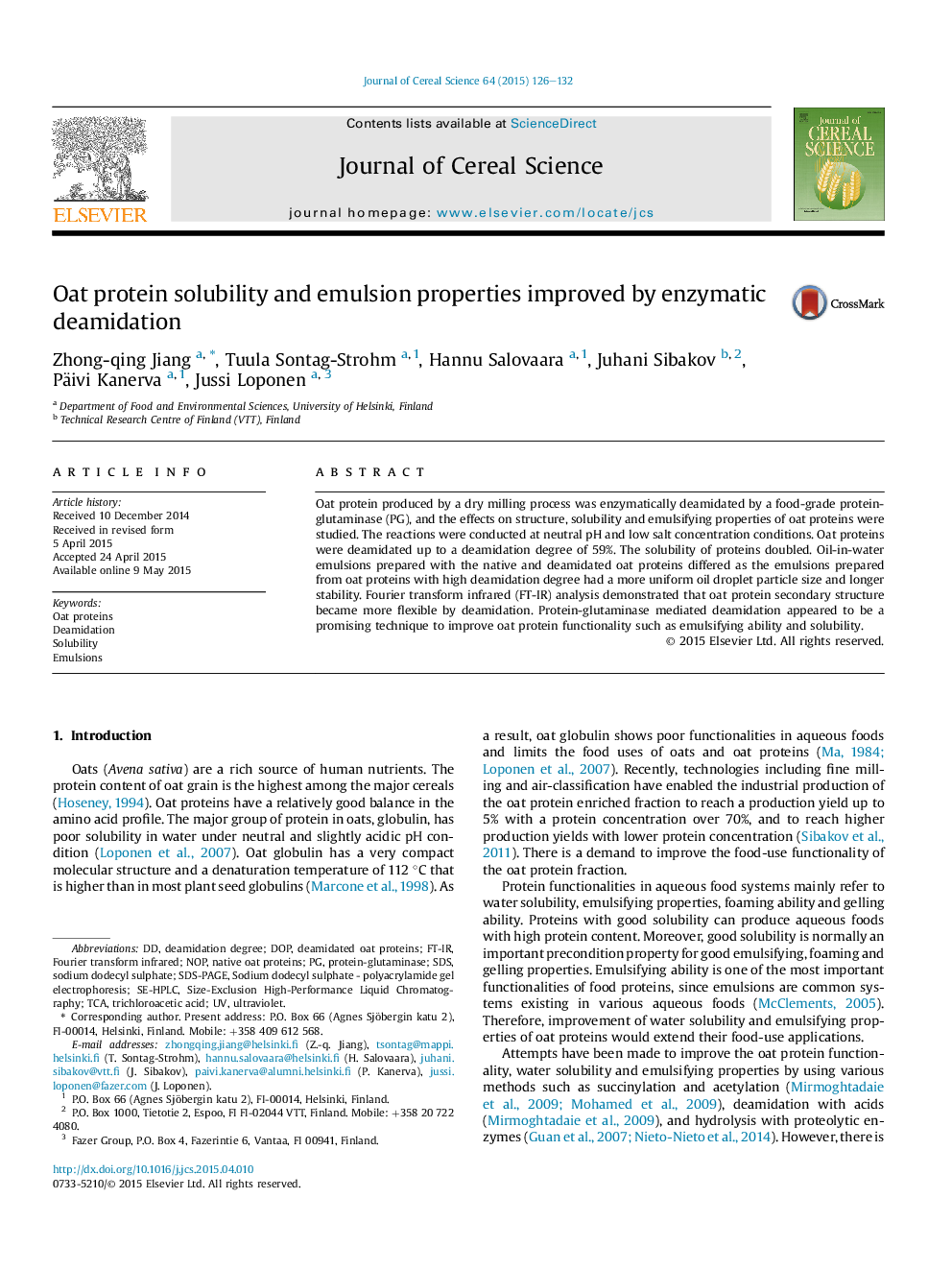| Article ID | Journal | Published Year | Pages | File Type |
|---|---|---|---|---|
| 4515643 | Journal of Cereal Science | 2015 | 7 Pages |
•Native oat proteins have low water solubility and poor emulsifying properties.•Protein-glutaminase deamidated oat proteins can form a stable (30 days) emulsion.•The solubility of proteins doubled after deamidation.•Oat protein secondary structure became more flexible by deamidation.•Oat protein can be modified by a food-grade, controllable and specific enzyme.
Oat protein produced by a dry milling process was enzymatically deamidated by a food-grade protein-glutaminase (PG), and the effects on structure, solubility and emulsifying properties of oat proteins were studied. The reactions were conducted at neutral pH and low salt concentration conditions. Oat proteins were deamidated up to a deamidation degree of 59%. The solubility of proteins doubled. Oil-in-water emulsions prepared with the native and deamidated oat proteins differed as the emulsions prepared from oat proteins with high deamidation degree had a more uniform oil droplet particle size and longer stability. Fourier transform infrared (FT-IR) analysis demonstrated that oat protein secondary structure became more flexible by deamidation. Protein-glutaminase mediated deamidation appeared to be a promising technique to improve oat protein functionality such as emulsifying ability and solubility.
